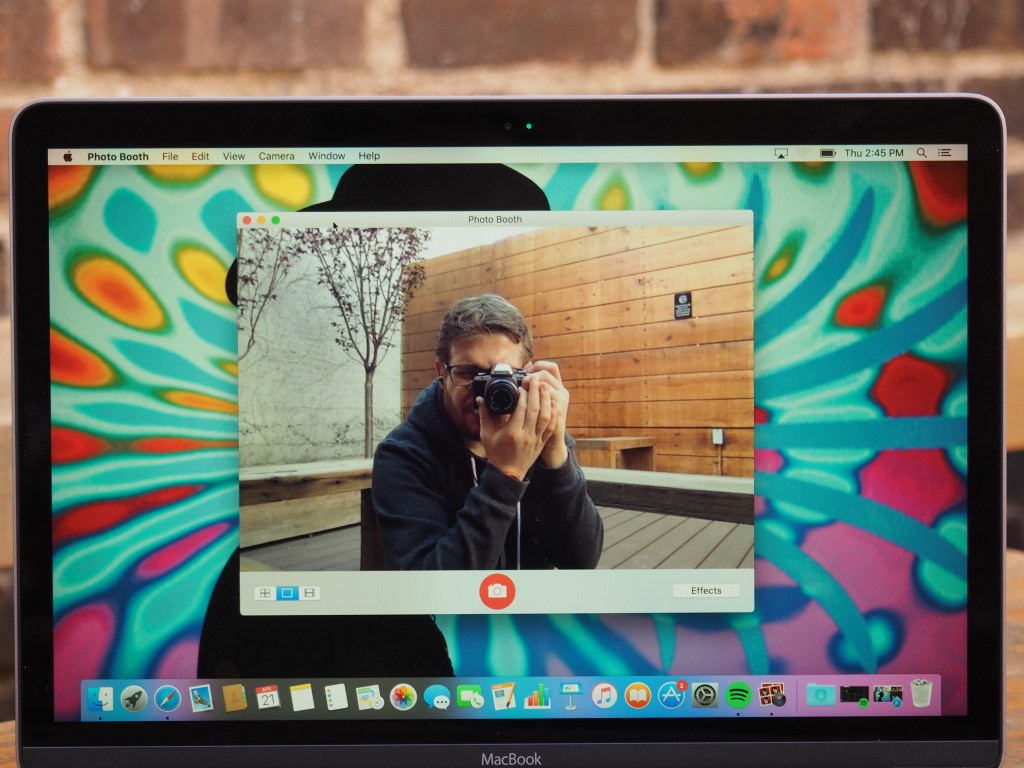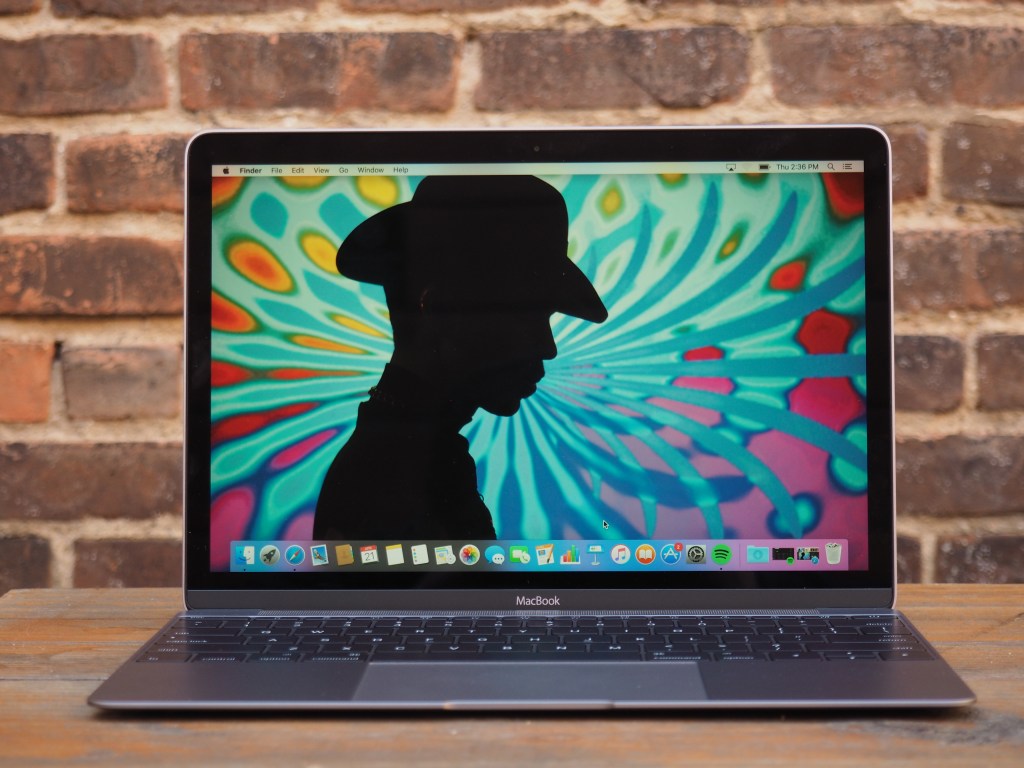For many, the Steve Jobs manila envelope trick was enough.
Sure, it seems a bit silly with the benefit of nearly a decade’s worth of hindsight, but when Apple’s late CEO unwrapped the standard bit of office stationary to reveal what he’d enthusiastically declared “the world’s thinnest laptop” onstage at Macworld back in 2008, the crowd, predictably, went wild.
Eight years after the release of the MacBook Air, early adopters remember it as much for its sacrifices as the design decisions that spawned them. But little by little the machine evolved, until one day the Air had become a full-fledged computer. Pinocchio had become a real boy. And there was much rejoicing.
There were echoes of that first Air in last year’s MacBook debut. Once again, the company unveiled a remarkably thin and gorgeous piece of machinery that made the Air look downright unwieldy. And once again, it carried some caveats, dropping all but a single port and taking a notable performance hit.
Round two is hardly an overhaul, but the latest MacBook does take some key steps toward the end goal of becoming a primary driver, bringing a faster processor, improved graphics and better battery life. Oh, and most importantly, it’s now available in Rose Gold, a color that previously required a trip to the art supply store and a voided warranty if you wanted it for your Mac.
At a Glance
- 12-inch 2304 x 1440 (226 PPI) display
- 1.1 to 1.3 GHz Intel Skylake processors
- Intel HD Graphics 515
- 2.03 pounds, 0.52 inches thick
Pros
- Great screen
- Ultra-thin design
- Good battery life
Cons
- Pricey
- Single USB-C Port
- Mediocre keyboard
Macbook Review | 2:46
My Macbook Air suddenly looks gigantic
Let me just get this bit out of the way now, and we don’t have to talk about again. I’m bummed that Apple didn’t send me the Rose Gold one. All right, that’s it. We can move on.
Beyond that new color option, the design language is untouched. No surprise there, really. Like so many of the Apple products that preceded it, the MacBook is as much a monument to modern industrial design as it is a functioning piece of consumer electronics. It’s a celebration of simplicity right down to the name, which completely did away with any additional qualifiers.
The MacBook is as much a monument to modern industrial design as it is a functioning piece of consumer electronics.
Closed, the 12-inch MacBook is 0.52 inches at its thickest – that’s just a hair thicker than the first-generation iPad and notably thinner than the 11-inch Air. At 2.03 pounds for the base level model, it’s also a fair bit lighter than the Air’s 2.38 pounds. In fact, it’s toss-it-in-your-backpack-and-forget-about-it light. I found myself carrying it around a lot in one hand. Not for any particular reason, mind, but just because I could.
It’s a lovely little testament to what Apple’s been able to do with aluminum that makes my 13-inch MacBook Air look downright unwieldy when the two are placed next to each other. It’s small, it’s simple, it’s beautiful. Really, it’s quintessentially Apple. There are, however, drawbacks to such minimalism.
For Apple, innovation means never having to say you’re sorry for abandoning old features. Remember when the company ditched the optical drive on its laptops? Or what about all of the people who swore they’d never trade their phone’s physical keyboard for the onscreen variety?
Time has mostly vindicated the company on those two fronts, but the march to minimalism isn’t always in the best interest of the consumer. And in spite of the fact that the company has been steadily removing ports as it has focus on the thin and light, the MacBook’s single port interface still came as something of a shock to the system when it debuted last year.
It’s small, it’s simple, it’s beautiful. Really, it’s quintessentially Apple.
Heck, I still find myself struggling to cope with the Air’s measly two USB ports at work with a desk full of peripherals. On the MacBook, it’s one USB-C on one side a the headphone jack on the other. If you want to say, charge your phone or plug in an external monitor while charging, Apple, naturally, you’ll need an adapter
Apple naturally has a $79 solution to that problem, along with some third-party offerings that bring even more to the table, including an Ethernet port and SD card slot. Either way, even the most mobile of users has to take a break and plug in from time to time. And that almost certainly means picking up an adapter.
Return of the Retina
The display looked great the first time around. And it looks great this time. In fact, it’s the same display. It’s that retina screen that has had Air owners enviously eyeing the new line for two generations now, clocking in at 2304 x 1440 pixels. That works out to 226 pixels per inch, and more importantly, it’s a pleasure to look at.
The colors are accurate and bright without being oversaturated, and the image details are extremely sharp. Until Apple ups the resolution on the Air (or, rather, if Apple ups the resolution on the Air), the screen will continue to be one of the laptop’s central selling points.
The audio, unsurprisingly, isn’t quite as stellar. The thin speaker grille that runs along the area between the keyboard and speaker gets plenty loud, but it’s thin and tinny and not particularly suited to any sort of serious music listening. Maybe some day the Dr. Dre deal will bear some fruit on this front. In the meantime, invest in a pair of Bluetooth headphones.
The webcam, meanwhile, is likely something Apple would just rather not talk about. It’s…not great. The 480p video is hardly the sort of thing one expects to come loaded on a $1,300 machine. And for any number of reasons, an external webcam really isn’t an option.
Word-processing power
If I were a betting man, I’d put some serious money down on Apple’s having had some serious conversations about phasing out the physical keyboard altogether, as the company continues to blur the lines between its laptop and tablet spaces. In the meantime, we’ve got a shallow, nearly flat one that splits the difference between other MacBooks and the keyboard you’ll find of a lot of convertible tablets.
It takes some getting used to, and even then it isn’t really ideal for those who do a lot of typing. If you count yourself among the doomed souls who write for a living, it could potentially be a big strike against the laptop, though I’ve seen people file blog posts from smartphones, so I firmly believe the human spirit is capable of some incredible things when backed into a corner.
If you count yourself among the doomed souls who write for a living, it could potentially be a big strike against the laptop.
The trackpad, meanwhile, is Apple’s latest and greatest, built around the Force Touch technology the company has since incorporated into the MacBook Pro and iPhone, making it possible to perform different tasks by applying varying levels of pressure. I’ve yet to actually incorporate any of those into my daily computing, but even still, Apple’s got the trackpad business covered.
It’s what’s inside that counts
As noted above, the biggest changes are inside, where they really count (or so my mother and Barney the Dinosaur told me). The biggest difference users will notice is the battery boost.
Apple estimates the increase at about an hour over the 2015 model, and I found I was able to get through a day of use without worrying about plugging the thing in, even while I streamed Spotify and stopped to watch a bit of Kimmy Schmidt.
The difference in processors might not be so immediately apparently, but there’s definitely a performance boost here. I clocked in a score of 5843 on Geekbench, a significant bump over last year’s average, and a bit higher than the current Air’s. More pronounced results will begin to show when running resource-intensive programs or while using several apps at once.

Tough choices
Before I bought a MacBook Air the first time, I sat and stared at the company’s comparison spreadsheet for what felt like hours. In fact, I probably lost sleep over the decision, weighing the potential power sacrifices I’d be making for the promise of portability and the lessening of long-term lower back pain.
I get flashes of that anxiety looking at the MacBook. There are, of course, tradeoffs with each of the company’s three models. Hey, if one of them were perfect, the company probably wouldn’t bother to keep the one ones around.
The performance enhancements do go a way toward lessening that feeling of sacrifice, while the Retina Display gives the MacBook another thing to lord over the Air. The whole single-port situation continues to be a sticking point, as is the $1,299 starting price, which puts the laptop at $300 and $400 more than the 11- and 13-inch Airs, respectively.
Either way, I’d recommend waiting things out until WWDC rolls around in June. Odds are we’ll be seeing even more new additions to the Mac family, which might make the decision-making process a bit easier — though probably not.































Comment